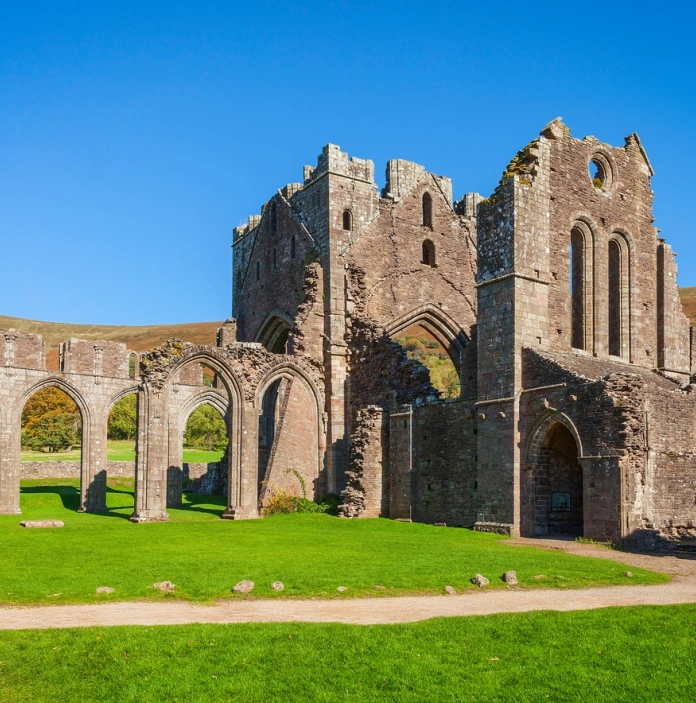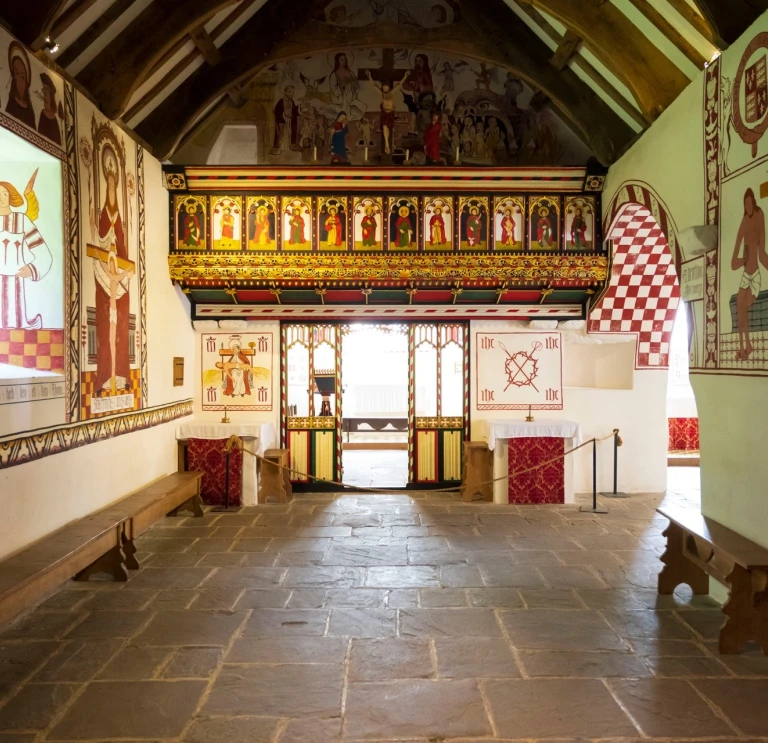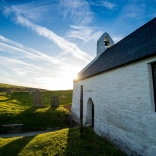When you come to South Wales, you'll recognise our industrial towns and close characterful communities, which chapels and churches helped shape. The roots of Wales' Jewish and Muslim communities grew from here too, and other forgotten places of worship also carry rich stories.
A pilgrimage through this part of our country reveals Wales' wide outlook on faith. Moving from Glamorgan's Heritage Coast to Cardiff, our capital city, then through the Wye Valley and Vale of Usk to the heartlands of the Valleys, we'll find extraordinary relics and tales as we go. There's so much in South Wales to inspire us to keep on travelling.
St Illtud's Church and Galilee Chapel, Llantwit Major, Vale of Glamorgan
Let’s begin at the beginning – or in the very early days of Celtic Christianity at least. A 6th century abbot, St Illtud, founded a monastic school here in Llantwit Major, powered by his faith and passion for education. With a thousand pupils on its register, it became one of Britain's earliest centres of learning. St David and Ireland's St Patrick studied here according to legend. A school for saints indeed.
The current St Illtud's Church dates from the 13th century, and comprises three buildings: the West and East Chapels, and the Galilee Chapel. The first is still used for worship, and the surroundings are stunning. Look out for the medieval priest effigies and a curfew bell underneath the oak roof. The East features wall paintings of saints, the Virgin Mary and Mary Magdalene, while the Galilee Chapel hosts one of the most important collections of Celtic Christian stones in the UK. Sensitively restored after 400 years in ruins, the building includes a 9th century pillar and an immaculate Celtic Wheel cross.
St Illtud's is an active church too. There are services on a Sunday and Wednesday morning and a Friday lunchtime, plus there are bell ringing sessions. The church is open every day and visitors are warmly welcome and encouraged.
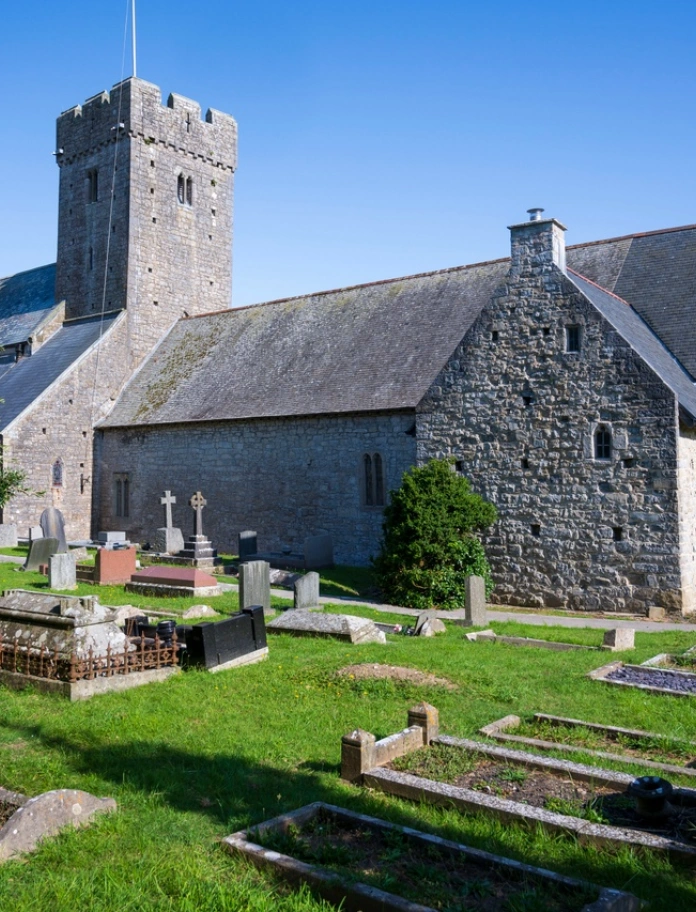
St Teilo's Church and Pen-rhiw Unitarian Chapel in St Fagans National Museum Of History, Cardiff
Most South Wales villages boast both church and chapel, and so does St Fagans. Our much-loved national open-air museum traces the life of Wales through buildings that have been removed and rebuilt: St Teilo’s Church was moved from Pontarddulais near Swansea to the site in 2003. It has been brilliantly recreated in its 1520's pomp. Brightly decorated murals, paintings and carvings show us how colourful Christianity was before Henry VIII dissolved the monasteries and the Reformation took hold.
The Pen-rhiw Chapel is a simpler but no less beautiful building. A whitewashed Unitarian Chapel moved from Dre-Fach, Felindre in Carmarthenshire in 1953, the pews downstairs are all slightly different, having been built for families who then took responsibility for them. It was discovered that this chapel was once a school too: when it was dismantled, ink bottles and quill pens were found under the floor. It is still used to celebrate Christmas, Easter and Harvest too, its original purpose continuing in a newer setting.
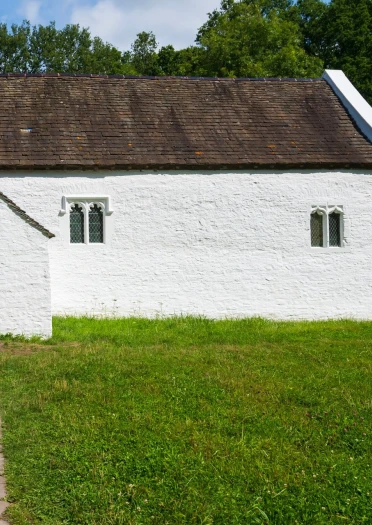
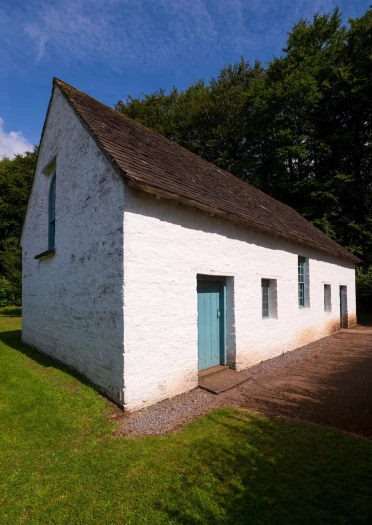
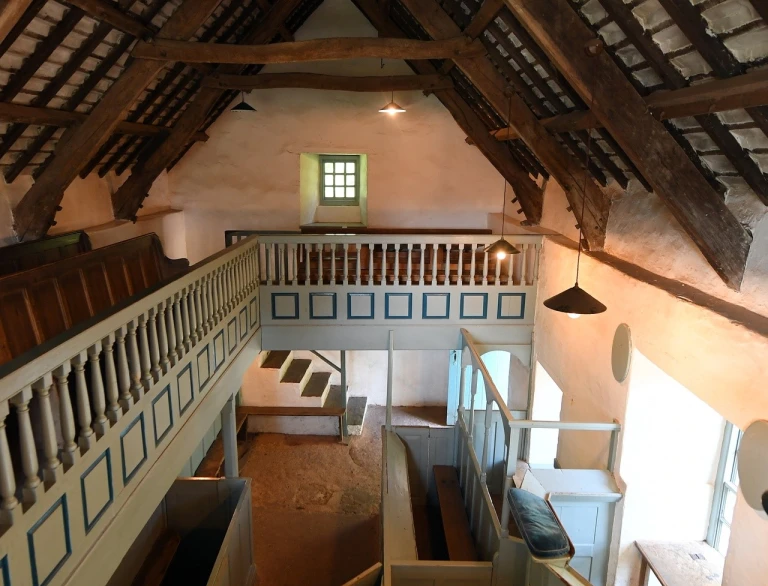
Llandaff Cathedral, Llandaff, Cardiff
Cardiff's stunning Llandaff Cathedral is a 12th century Anglican cathedral three miles north-west of the city centre. It's also survived quite a past. The rebellion of Owain Glyndwr hit it first, badly damaging its original building. Then came the Great Storm of 1703, taking off the roof. Two centuries of new building later, and a German bomb nearly destroyed it in the Second World War, before lightning struck it directly in 2007. Something truly divine has certainly kept it going.
Thanks to the support of its congregation and its funders however, a visit here remains a wonderful thing. The cathedral's position on a bank by the River Taff is full of tranquillity. Glorious art is here too. A triptych of Pre-Raphaelite paintings by Dante Gabriel Rossetti sits over the high altar. A modern sculpture of Jesus by Jewish artist Jacob Epstein brings a stark beauty to the nave. Don't miss the gilded panels featuring wildflowers in the Lady Chapel either. All are dedicated to Mary, including Gwniadur Mair (Mary's thimble, also known as the foxglove) and Ysgol Fair (Mary's ladder, aka the humble cornflower).
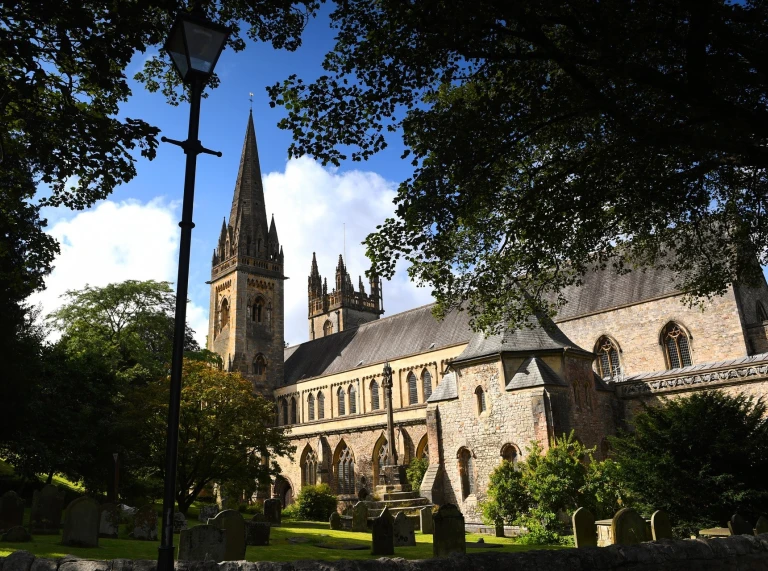
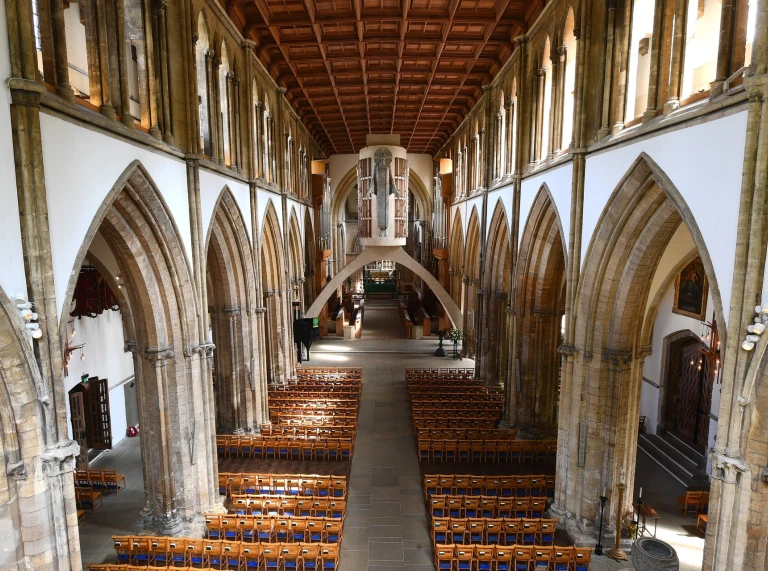
Norwegian Church, Cardiff Bay
The Norwegian Church is where Roald Dahl worshipped at throughout his childhood in Cardiff, and a church he helped save when it fell into disrepair. It was built in 1896, when our capital was one of the world's biggest seaports. Many Norwegian sailors would arrive here, bringing timber for pit props into South Wales. Dahl's father Harald came here too, setting up a ship-broking business in the city in the 1880s. The young Roald was baptised in this church, and he became the President of the campaign to save it in the 1980s, by which time he was an established literary figure worldwide.
The church's unusual look is down to corrugated iron sheets cladding its outside. This was done so it could be moved if required – as indeed it was in 1992. Taken from between the East and West Docks to a new point in Cardiff Bay, it reopened as an arts and events venue, and provides a place of wonderful stillness in today's busy Cardiff Bay. The Norsk Café is a lovely spot to grab a coffee, cake or a bite to eat.

Shah Jalal Islamic Cultural Centre, Cathays, Cardiff
The Shah Jalal Islamic Cultural Centre, a Grade II (two) listed mosque in Cathays tells a fascinating story of religion in Cardiff. This was once the home of Crwys Road Methodist Chapel, rebuilt from an earlier structure by local architect John Henry Philips in 1899-1900. It's a nicely flamboyant example of Art Nouveau, the turn-of-the-century movement inspired by natural forms, plants and flowers. The flanking towers, gabled entrance and bright green and yellow stones are particularly lovely, bringing drama to this simple street.
The mosque is active in the community, open for regular prayers, and for tours on the Muslim Council of Wales' Visit A Mosque Day.
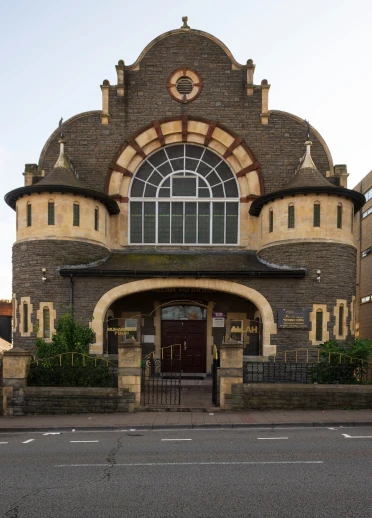
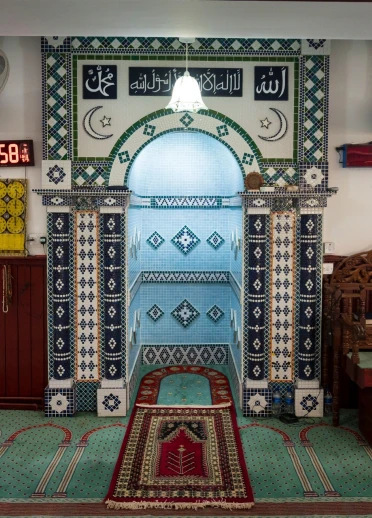
Cornerstone, Cardiff
The first Neo-gothic church built in Cardiff, Ebenezer Chapel, wowed worshippers when it was opened in 1855. Its architect, Robert George Thomas, 'incorporated a stone from every nation' while building it.
Such grandeur, however, required lots of money to preserve it, and its active congregation sold the building in 2010. Renamed Cornerstone when it re-opened in 2016, it is now a hub for the community, hosting concerts, exhibitions and events, with rooms being available for weddings and parties.
The Cornerstone's cafe, The Pantry, is open daily too. The afternoon teas are particularly lively – the Gentleman’s Afternoon Tea includes a bottle of craft beer Punk IPA. The original Ebenezer Chapel congregation also remains active in the city, with over 200 Welsh members.
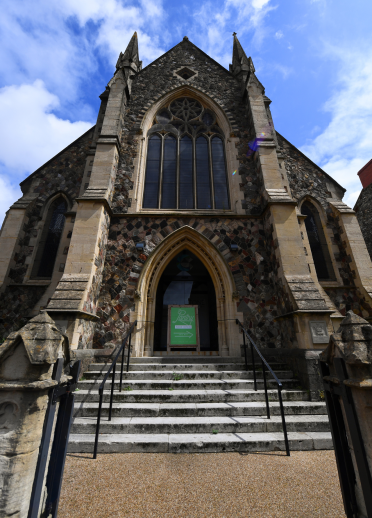
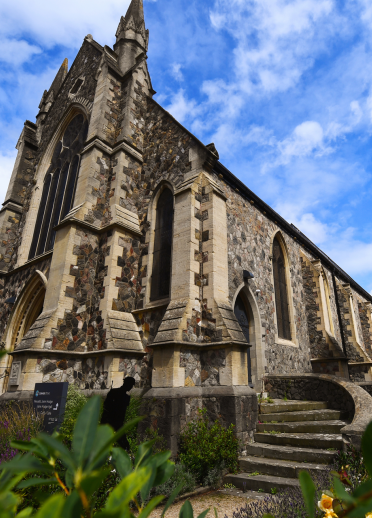
The Parish Church of St Cadoc, Llancarfan, Vale of Glamorgan
Imagine replacing your church roof and some wall plates and then finding some of the most extraordinary medieval wall paintings in Wales. This happened in 2006 at The Parish Church of St Cadoc in Llancarfan, a village between the towns of Barry and Cowbridge. Conservation experts came in after that, and the church's great treasures were revealed. These include extraordinary tableaus of St George and the Dragon, the Seven Deadly Sins and the Seven Virtues.
The history doesn't stop there. There has been a religious site here since 650AD, and the church boasts a rare, re-gilded 15th century rood screen. Open 365 days a year for visitors between 9am and 5pm, services are also held on Sunday and Wednesday mornings.

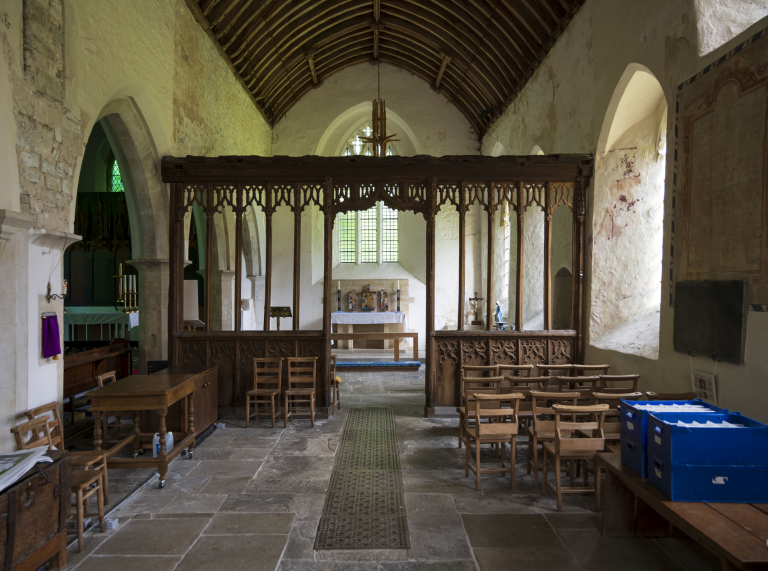
St Jerome's, Llangwm Uchaf, and St Mary's, Llanfair Kilgeddin, Vale of Usk
The Wye Valley and Vale of Usk is full of beautiful small churches. These including those no longer used for worship, some of which are preserved by The Friends Of Friendless Churches. The church of St Jerome's in the tiny village of Llangwm Uchaf is a particularly breathtaking example. A Grade I (one) listed church of 12th century origins, it boasts a stunning 15th century screen, painted in green, red and blue, and beautiful Pre-Raphaelite tiles in turquoise and brown. Such colours are rarely seen preserved so vividly. Also look out for the carved head of a Green Man when you're there, which was an early medieval stone lamp. The church is kept open for visitors.
Ten short miles away, you'll find St Mary's in Llanfair Kilgeddin. Its internal decorations are genuinely unique, decorated by English Arts and Crafts artist Heywood Sumner using a Roman technique called scraffito (where thin layers of coloured plaster are cut back to reveal other colours underneath). Commissioned in the late 19th century, Sumner included local features in his designs, like the River Usk, Sugar Loaf mountain and the tower of the nearby Llanvihangel Gobion church. One point before you go: contact the Friends Of Friendless Churches for the keyholder's phone number before making your journey.
Tintern Abbey, Wye Valley
Set in the dramatic winding landscape of the lower Wye Valley, Tintern Abbey is one of the greatest examples of gothic architecture in Britain. It has famously influenced writers, including William Wordsworth, whose poem Lines Composed a Few Miles above Tintern Abbey, On Revisiting the Banks of the Wye during a Tour celebrates how landscapes have an effect on the soul. Many artists have been moved by the Abbey's majesty too, including J.M.W. Turner, whose paintings of the ruins sit in London's Tate Gallery and the British Museum.
The Abbey is open all year round, apart from between 24-26 December and on New Year's Day. Events, recitals and workshops are also held regularly, as are special sessions for children during school holidays.
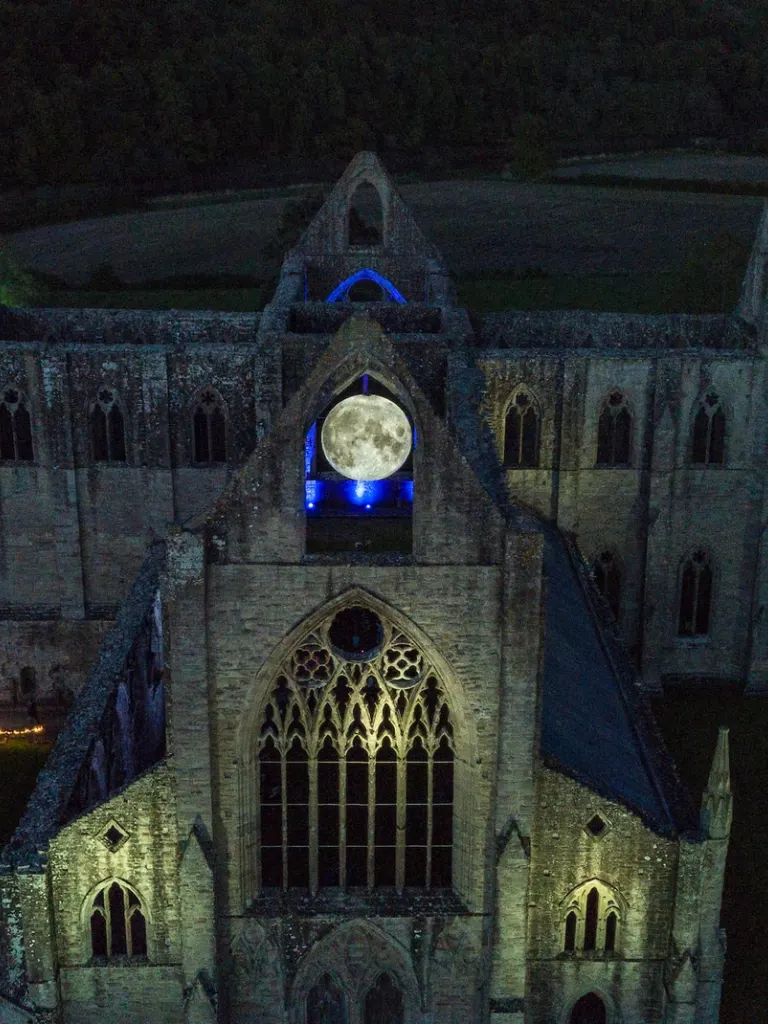
Pontypridd Museum, Tabernacle Chapel
On the west bank of the River Taff beside Pontypridd Bridge, you'll find this handsome three-storey former Victorian chapel. Turned into a community amgueddfa in 1986, Pontypridd Museum stills has its original pipe organ, pulpit and a beautiful decorative interior. Inside, it tells the story of its religious past beautifully, along with the industrial, social and cultural history of the community it served.
Anyone interested in family history will also be well-served here, as its cheerful volunteers always happy to help. Open Monday to Friday from 10am to 4.30pm, craft fayres, talks, and children's events are also held at the museum throughout the year.
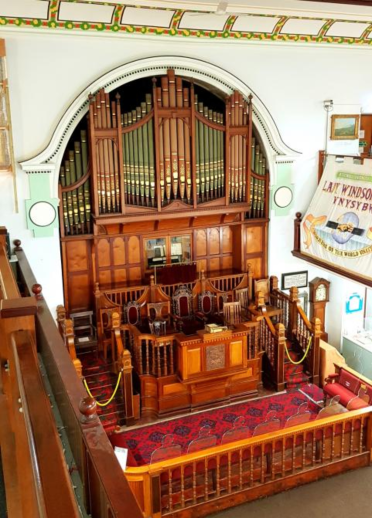
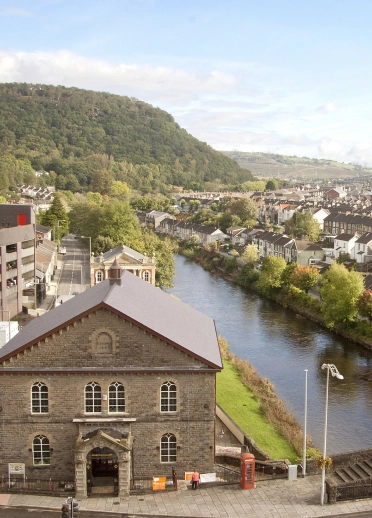
Merthyr Tydfil Synagogue
Above Church Street in Merthyr Tydfil stands the Merthyr Tydfil Synagogue, reminding us of the rich Jewish history in this town. In the late 19th and early 20th centuries, the biggest Jewish community in Wales lived here: more than 400 people helped to make this industrial powerhouse prosper. A button factory, and a chocolate business were among the Jewish enterprises, and an annual Jewish Ball was a highlight of the town's social calendar, attended by both believers and non-believers.
The synagogue was built in the 1870s, featuring gothic twin turrets and a stained-glass window with a six-pointed star. A Welsh dragon also decorates the building’s gable, showing how important local culture was to this busy community. Closed in the 1980s before being turned into a Christian centre then a gymnasium, a national campaign plans to turn it into a Jewish Museum for Wales, supported by the city council, local MPs, and prominent cultural figures (these include TV historian Simon Schama and Booker Prize winning author Howard Jacobson).
St Cynwyd, Llangynwyd, Maesteg
This lovely Welsh hilltop village is home to St Cynwyd's Church, which also has one of the largest private graveyards in Europe. It is also the setting of the famous Welsh folk tale, the Maid of Cefn Ydfa, about a young woman, Ann Thomas, whose wealthy guardian decides she will marry his son. Ann however is love with someone else: a poor, local thatcher Wil Hopcyn, who she is forbidden to see.
Ann is kept prisoner in her own house. She writes letters to Wil before these are discovered, and her writing tools are taken away. Legend says that she carried on writing to him on leaves using her own blood; later, she became seriously ill. Only 23 on her deathbed, she asks to see him, and dies in his arms. Ann is buried in a grave under the chancel of the church, while Wil lies under an ancient yew tree nearby, separated in death as in life.
Our Lady Of Penrhys, South Wales Valleys
On a hillside overlooking the Rhondda Valleys stands an extraordinary statue of a Virgin and child. This is a replacement for a medieval statue which appeared in an oak tree by a nearby holy well, making the small village of Penrhys a site for pilgrimage. Thomas Cromwell had this statue secretly removed and burned in 1538, but Catholics still travelled to the place where it once stood.
In 1953, a new statue was unveiled at the site, made of Portland stone using descriptions left in medieval Welsh poetry. Pilgrimages to it continue today. The Penrhys Pilgrimage Way, which leads from Cardiff to Penrhys, 34 kilometers north in the Rhodda Valley has been walkable again since 2022, thanks to the initiative of a local charity, the Penrhys Pilgrimage Working party. With the help of historians, volunteers mapped the route, paved paths, removed obstacles and put up signposts. In that spirit of commitment, community and connection, there's Welsh religion's beating heart. Divided into six sections, the route starts at the west gate of Llandaff Cathedral in Cardiff and leads through changing landscapes with access to public transportation at various points.
Llanthony Priory, Llanthony, Bannau Brycheiniog (Brecon Beacons)
Nestled in the remote Vale Of Ewyas, a 15-minute drive from the A465 between Abergavenny and Hereford, Llanthony Priory is one of medieval mid-Wales’ most stunning sites. Founded in the 12th century by English nobleman William De Lacy, a community of monks flourished here. They ate fishes brought over the Bannau Brycheiniog (Brecon Beacons) from Llangorse Lake, and got their beer over the border from Abbeydore in England.
If you can, travel north from here after you leave on the Gospel Pass, one of the most breathtaking mountain roads in Wales. This passes another humble church, the 18th century Church Of St Mary The Virgin in Capel-Y-Ffin, before it twists and turns towards the road’s highest point. From here, you can see forty miles over the Bannau Brycheiniog to the west. As spiritual experiences go, it’s hard to deny.
